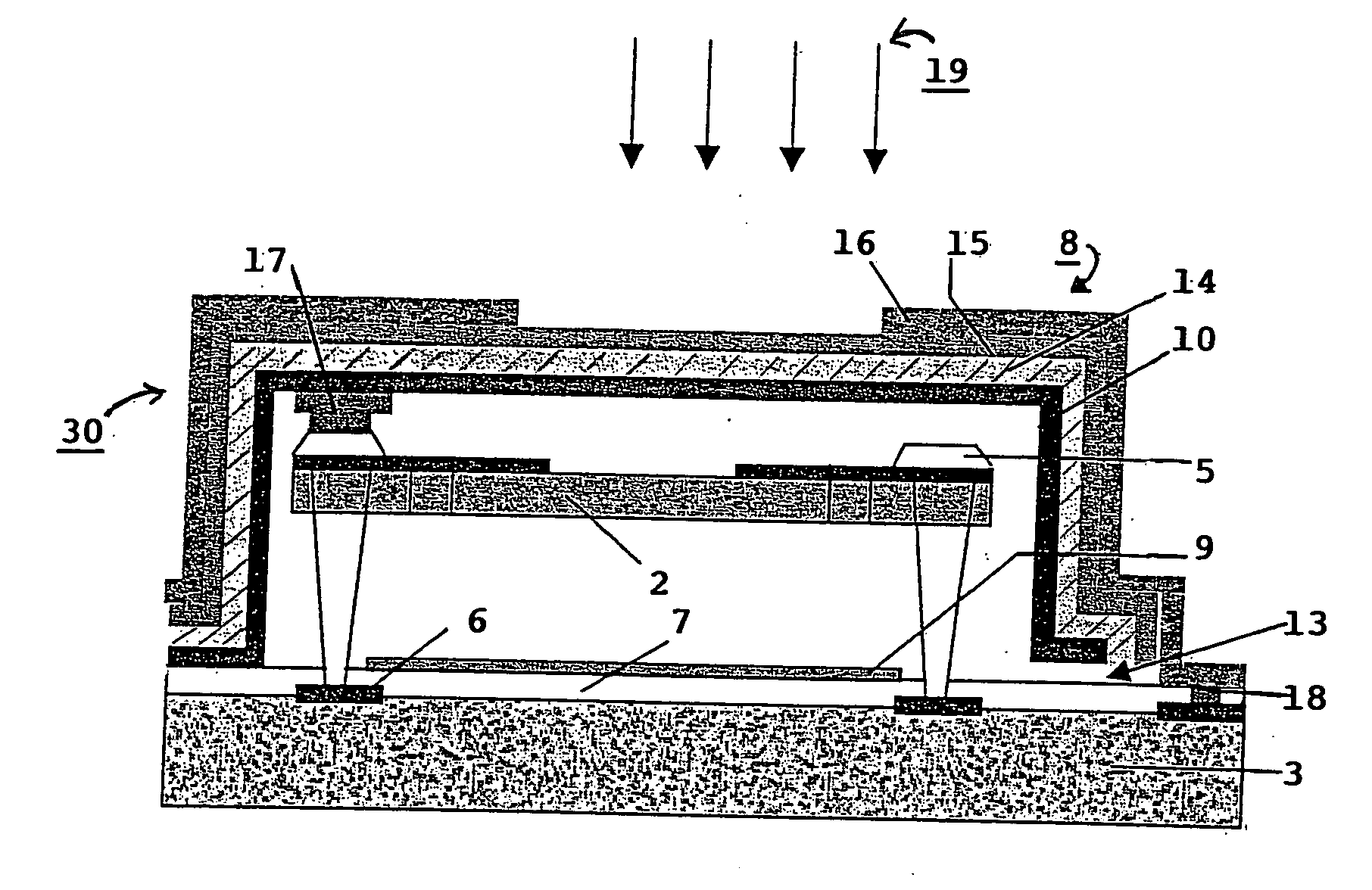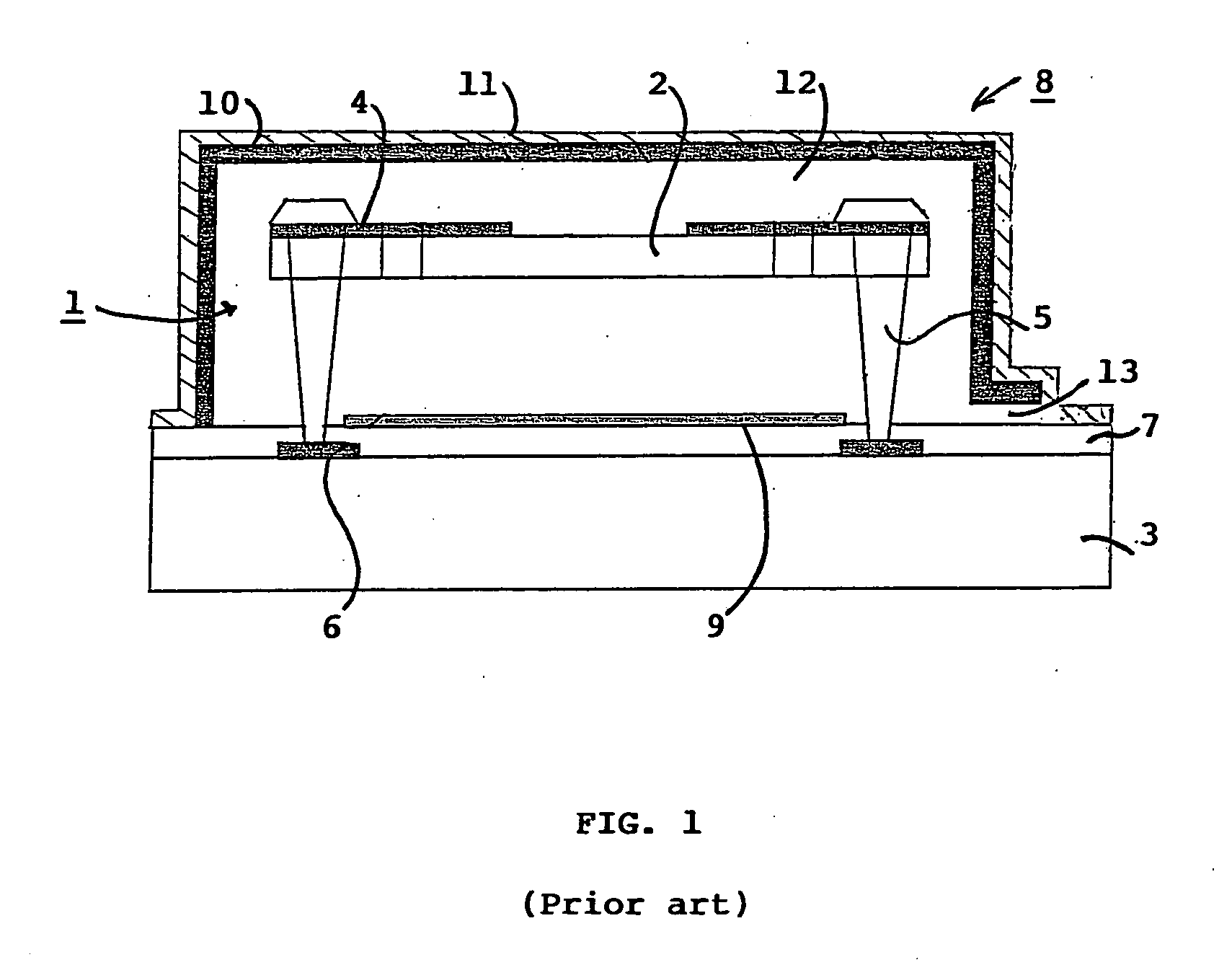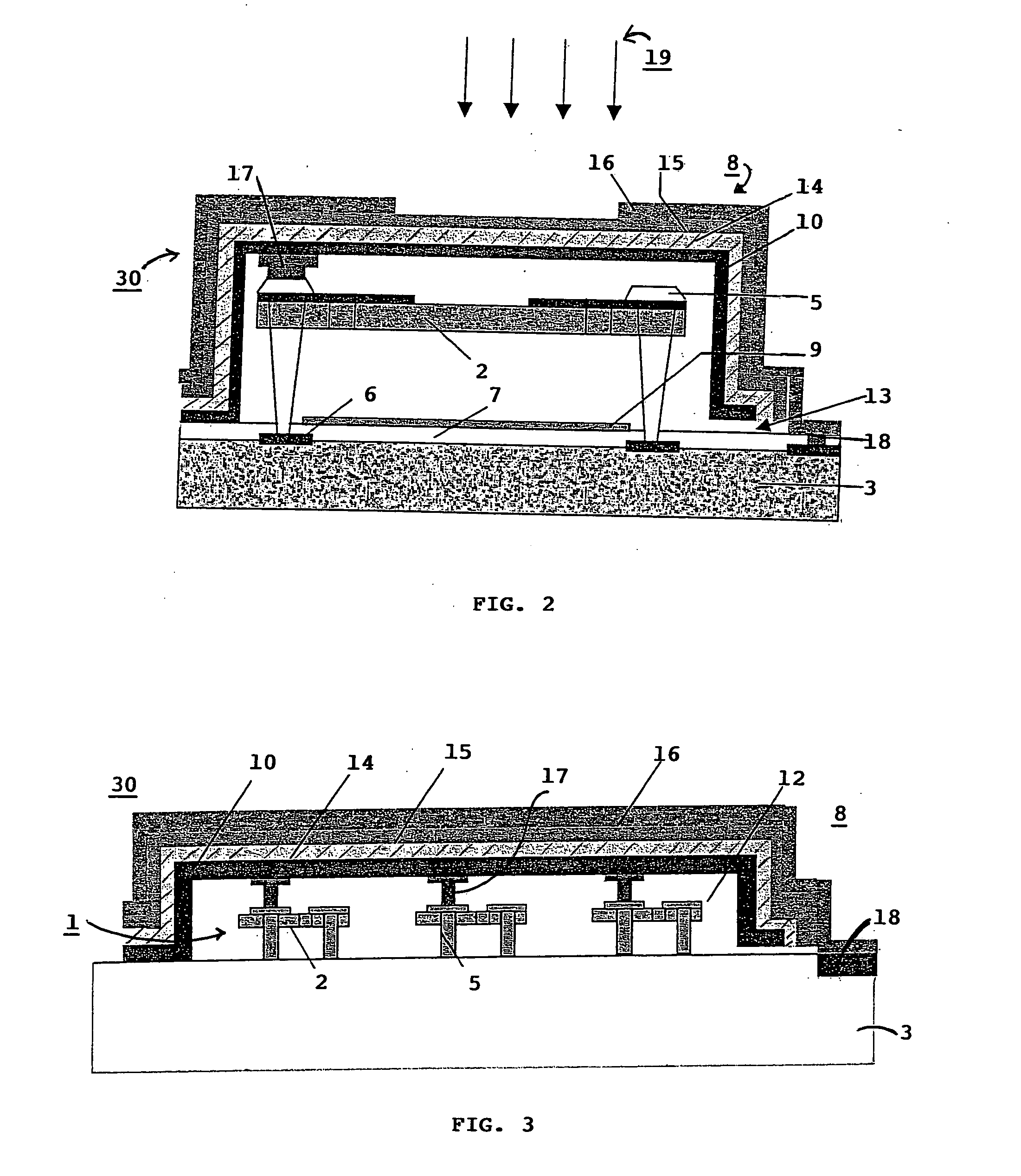Electromagnetic radiation detection device with integrated housing comprising two superposed detectors
a detection device and detector technology, applied in the field of electromagnetic radiation detection devices comprising two superposed detectors, can solve the problems of relatively expensive and complex implementation of infrared detectors, and achieve the effect of optimizing the performance of the two detectors
- Summary
- Abstract
- Description
- Claims
- Application Information
AI Technical Summary
Benefits of technology
Problems solved by technology
Method used
Image
Examples
Embodiment Construction
[0018] The electromagnetic radiation detection device is advantageously achieved by technologies used in the micro-electronics field. It comprises two superposed detectors. A first non-cooled detector detects a first range of wavelengths and a second non-cooled detector detects a second range of wavelengths.
[0019] The first non-cooled detector preferably detects a first range of wavelengths comprised in the infrared range. The first detector is arranged inside a protective housing. It can for example be formed by a thermocouple, a diode or preferably a non-cooled thermal detector such as a bolometer of known type, for example as represented in FIG. 1.
[0020] In FIG. 1, the bolometer 1, operating at ambient temperature, comprises at least one sensitive element 2, in the form of a thin layer, connected to an electronic processing circuit 3. The circuit 3 can for example be in the form of thin layers in silicon technology, of CMOS or CCD type. The circuit 3 and sensitive element sensi...
PUM
 Login to View More
Login to View More Abstract
Description
Claims
Application Information
 Login to View More
Login to View More - R&D
- Intellectual Property
- Life Sciences
- Materials
- Tech Scout
- Unparalleled Data Quality
- Higher Quality Content
- 60% Fewer Hallucinations
Browse by: Latest US Patents, China's latest patents, Technical Efficacy Thesaurus, Application Domain, Technology Topic, Popular Technical Reports.
© 2025 PatSnap. All rights reserved.Legal|Privacy policy|Modern Slavery Act Transparency Statement|Sitemap|About US| Contact US: help@patsnap.com



